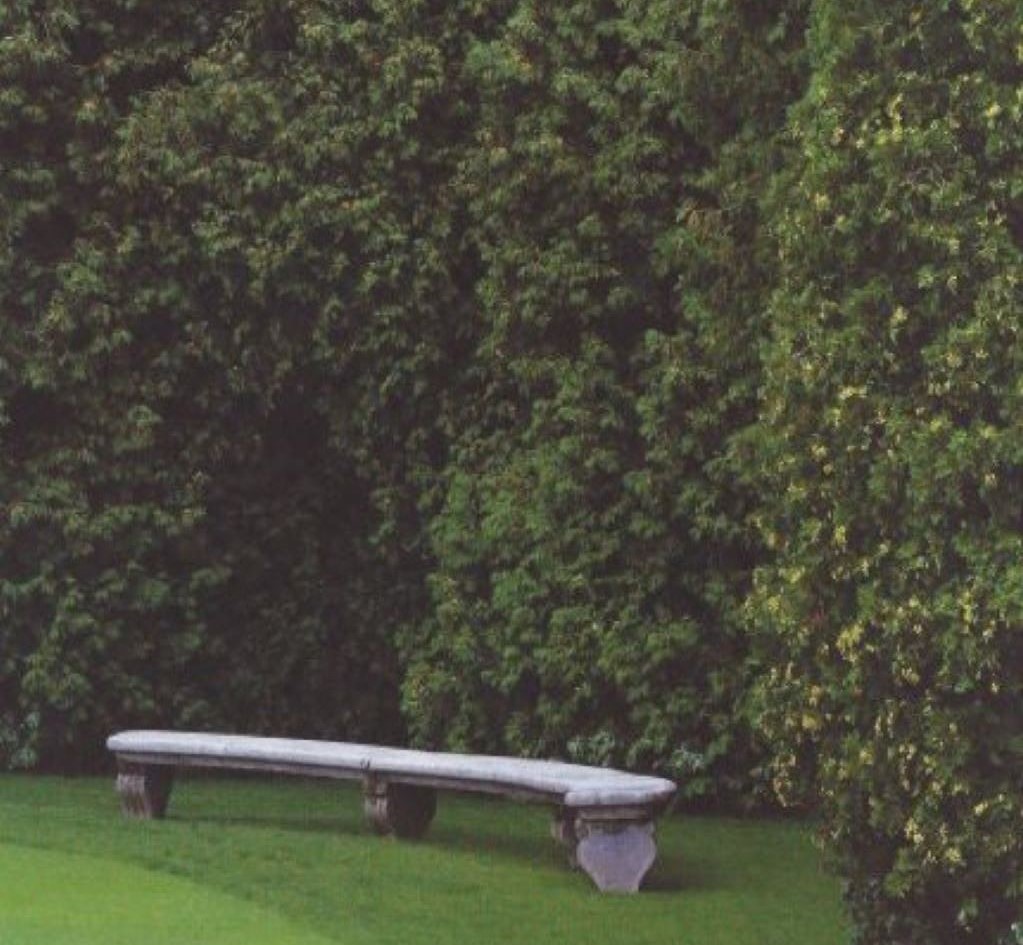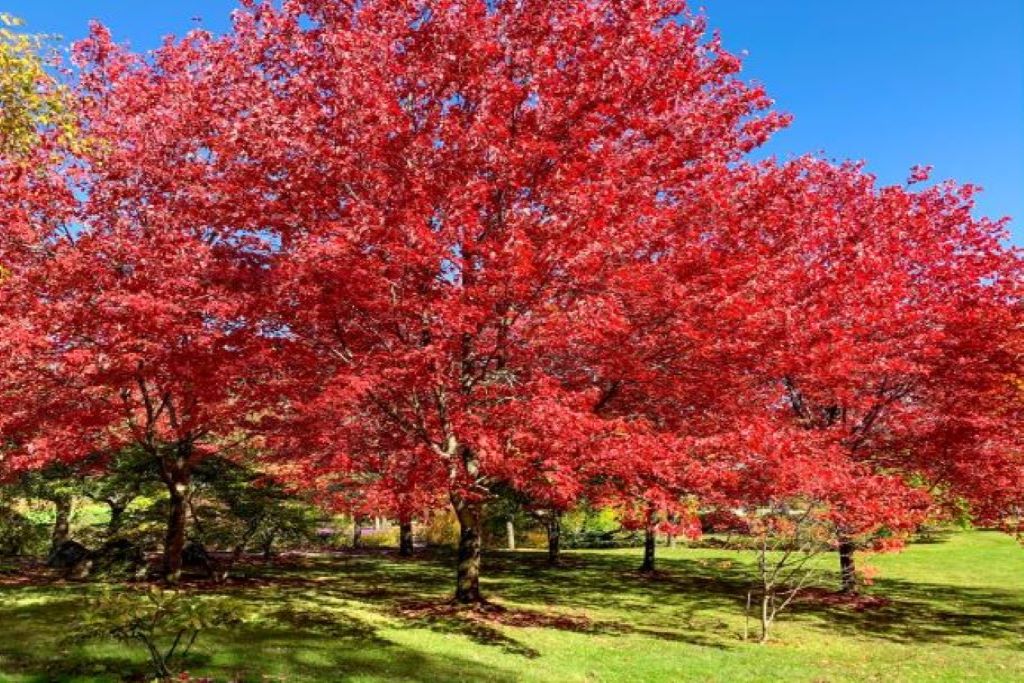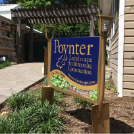Perfect for Any Landscape
Shade Tree Installation in St. Louis
Shade trees are an important part of any landscape. You will want to carefully select the correct type of tree, determine where the tree will go, and plant it in such a way that promotes the health of the tree and the rest of your property. When it comes to shade trees in this part of the Midwest, Poynter Landscape provides the horticultural knowledge and design capabilities your home needs.

Shade Trees in St. Louis, MO
As with other trees, the purpose of a shade tree is not only aesthetic, but also functionality. In the blazing summer months, shade trees help keep your home comfortably cool, conserve energy, and reduce your energy bill. They also provide targeted shade, creating a welcoming outdoor spot from which you can enjoy your beautiful landscape. While most shade trees don't flower, their leaves produce brilliant warm colors in the fall. In addition to enhancing the appearance and enjoyment of your St. Louis yard year-round, the presence of shade trees benefits the land itself by boosting the health of your soil and the quality of the air around you.
Trees as Screens
Trees are also often used as screens in the landscape. Screens are landscape or hardscape structures used to separate areas and/or provide privacy. A privacy fence is an example, but there are many ways plants can be creatively used to this end as well. In a residential property, evergreens and shrubs are often arranged in close formation to be used for this purpose; it creates a natural wall.
When using trees as a screen, there are specific factors you need to consider to make sure you achieve the desired effect, including:
- Where do you want privacy? If you want privacy from your neighbors from your second-floor deck, you'll want something that is tall enough and wide towards the top. If it's your patio area you want to be screened from passersby, something a little lower to the ground and full towards the bottom will work best. In general, evergreen trees have an upward-pointing triangle shape, meaning they are typically wider at the bottom and narrower towards the top. Deciduous trees are usually the inverse of this; they are narrow at the bottom, but the top of the tree grows wide.
- When do you want privacy? Whether you desire privacy all year long or only in the warmer months will dictate the type of trees you use to screen. An area you can see from inside or have to use no matter the weather will have different requirements than an area you only need to be screened in the spring and summer when you spend time in your yard. In Missouri, we have a five-month dormancy period. This means deciduous trees will shed their leaves and will not begin to produce new ones until five months later when it begins to warm up again (although, of course, this period will vary slightly from tree to tree). This makes evergreens the choice for year-round coverage and deciduous trees better for seasonal coverage.
- How fast will the tree grow? It won't do much good if the tree you choose to screen your upstairs bedroom window takes 30 years to grow to maturity. A good rule of thumb regarding how fast tree species grow is the softer the wood, the faster it grows.
In this industry, we have a list of staple tree species we like to use for screening in St. Louis, MO. Those trees are the Green Giant arborvitae, Norway Spruce, American Holly, American Hornbeam, and a variety of upright junipers. We will guide you in selecting the right type of trees for you and your needs. With the help of Poynter Landscaping, you can select and plant the perfect plants to screen your property.
Choosing a Shade Tree
Missouri has a great selection of native shade trees. The best type of tree for your property will depend on environmental factors like the soil condition and population density of the area. Poynter Landscaping will assess your land and find the trees best suited for that environment.
When selecting the best shade trees for your St. Louis, MO property, ask these questions:
- Where do you want the shade to be? Our landscape designers can help determine the best place to plant the tree to provide maximum shade coverage.
- What is the expected height and width of the tree when it reaches maturity? Knowing this helps narrow down the trees most appropriate for your specific property and tells you how far from your house and other structures the tree needs to be planted.
- What is the life expectancy of the species? We plan for shade trees to be a part of the landscape for a long time, so you want them to have a long and healthy life span.
- How quickly will it grow? You can’t plant a full-grown, 40-year-old tree. The tree you plant will be a bit smaller and younger, but a fast-growing tree means you will get the shade you want quicker.
- What is the origin of the species? What is its hardiness rating? The rating tells you how well it will tolerate the climate where you live. Native plants are more likely to do well, avoid the risk of invasive pest species, and save you water and money.
- Does it bear fruit or produce flowers? Most shade trees do not, but some do flower, such as the tulip tree. Also, trees that drop seed pods will create a mess in the same area you are trying to shade.
As always, don’t hesitate to contact Poynter Landscape or call us at 636-256-2600 if you have any questions. Our talented team is available to help you and to answer any questions you have related to shade trees, screens, or any other landscape topics.

Types of Trees Used for Shade
Deciduous trees are generally preferred over evergreens when used for shade. Unlike deciduous trees, evergreens produce year-round, solid shade. Here in the midwest, you will want some sun in the winter to warm your home and help melt ice and snow. And in the warmer months, the dappled light that shines through the gaps in the canopy of a nice maple tree is just the right touch.
Deciduous trees lose their leaves every fall. There are a lot of different deciduous trees. If you are in the St. Louis area, we recommend a Missouri native. Maple trees are popular shade trees in St. Louis and do well in the St. Louis area. Maples come in many varieties and sizes. American sycamore, honey locust, river birch, green giant arborvitae and are some other common shade tree choices for your greater St. Louis home. Our landscape designers will find the best trees for your home.
Here are two additional downloadable guides!
Download Free Swimming Pool Design Guide
Download Free Outdoor Living Design Guide
View All Landscaping Services
Interested in Shade Trees in St. Louis, MO?
When done right, adding shade trees to a St. Louis home makes a significant impact. They increase the value and usability of the property and enhance the overall health of the landscape. While anyone can plant a tree with some basic information and a couple of tools, our premier landscaping service gives you an extra edge. To take full advantage of the beauty, sophistication, and functionality of a shade tree, you need our passionate and artful approach. Call us at 636-256-2600, or fill out the form on this page to learn more about our award-winning services or to schedule an appointment.




